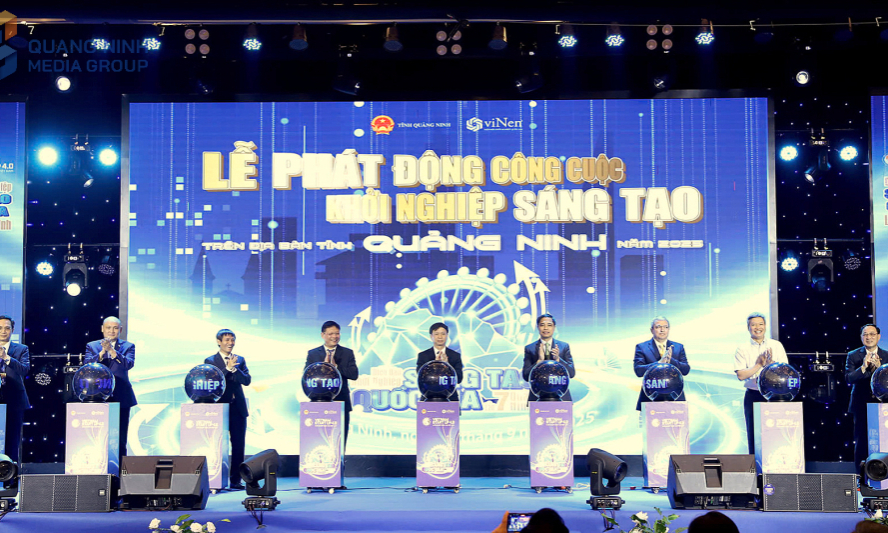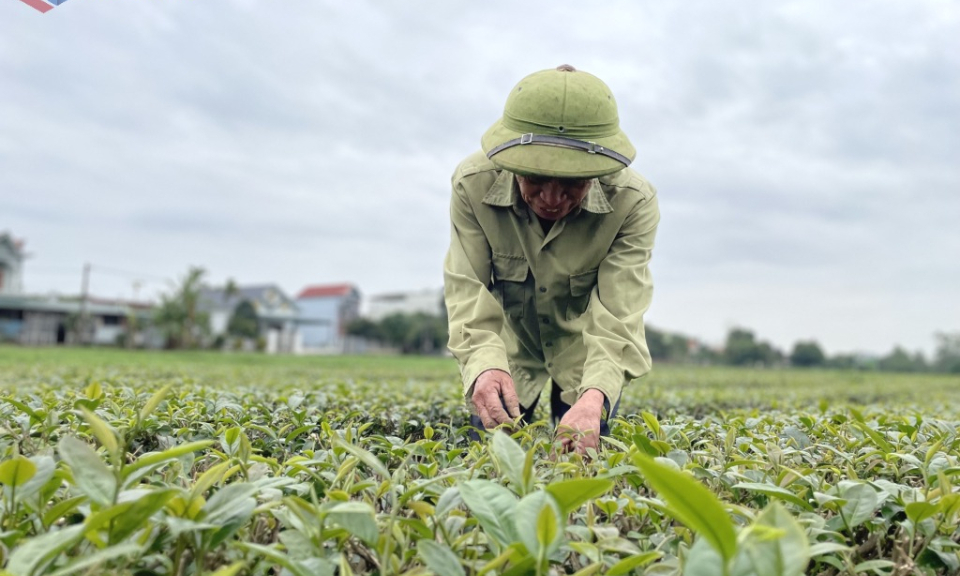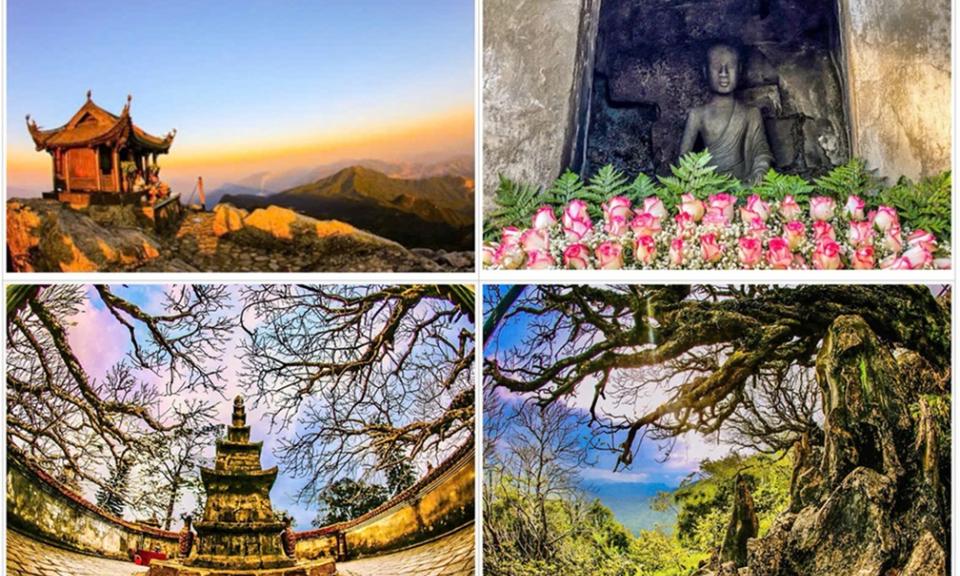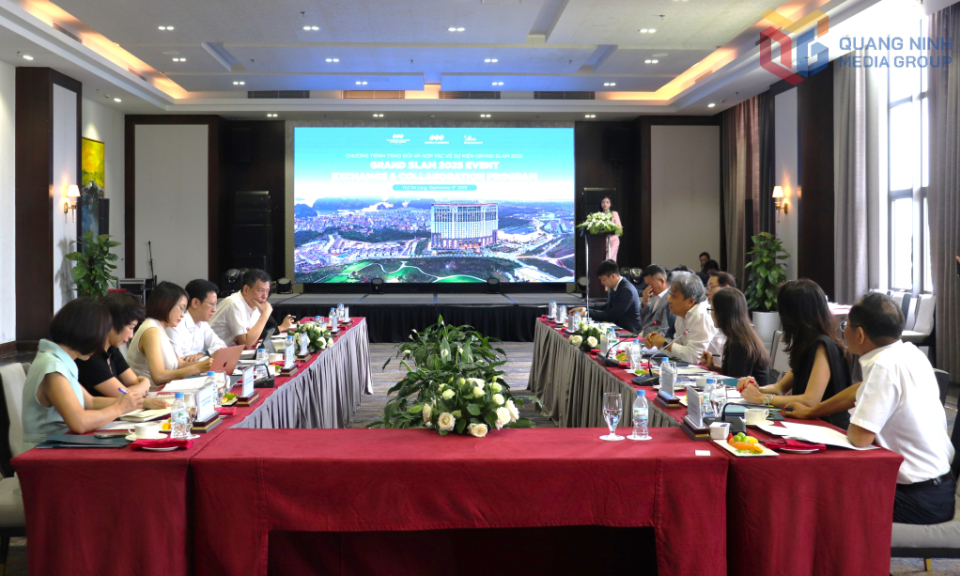Yen Tu Mountain - an impressive journey
A journey to Yen Tu Mountain is a precious chance for tourists to know more about the history, culture and spiritual life of Vietnamese in the past and at present.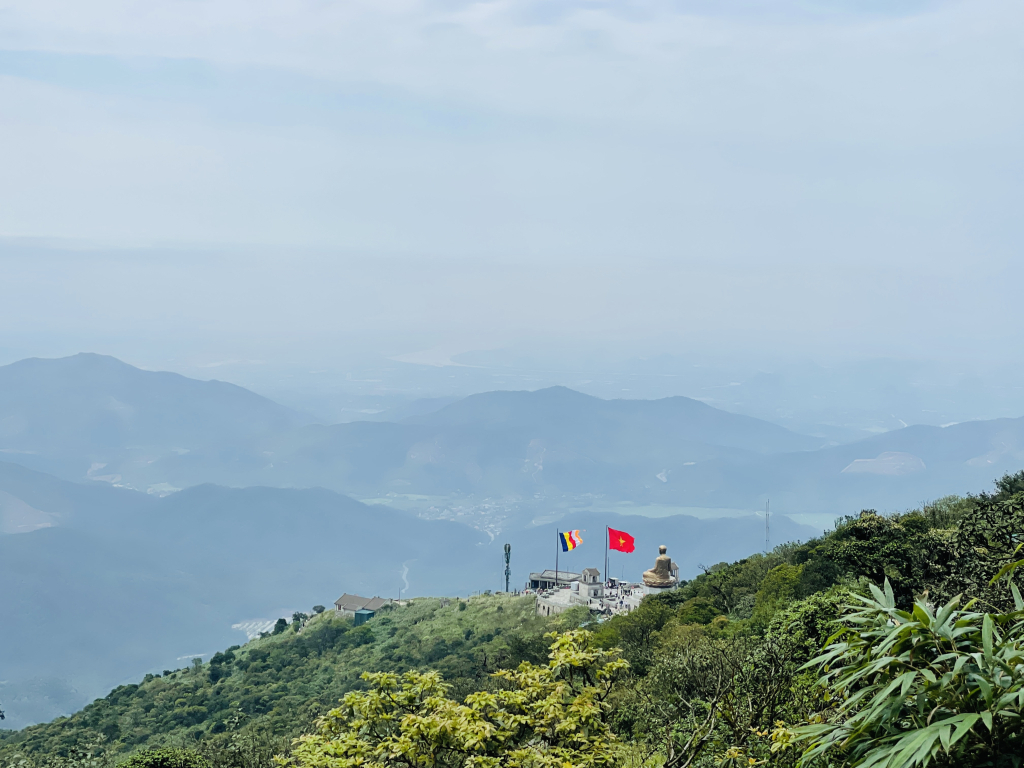
Truc Lam Yen Tu Zen Monastery
Truc Lam Yen Tu Zen Monastery is also known as Lan Pagoda or Long Dong Pagoda. The pagoda was built in 1293 by King Tran Nhan Tong. As mentioned in the historical documents, Lan Pagoda was the place where King Tran Nhan Tong preached sermons to his disciples. After King Tran Nhan Tong passed away, the other ancestors of Truc Lam Zen Sect such as Phap Loa, Huyen Quang and Chan Nguyen also preached to other monks.During the wars in the 20th century, Lan Pagoda was completely destroyed by the invaders. Based on the ground of the old pagoda, the locals rebuilt a smaller pagoda as a place of worship. In 2002, Lan Pagoda was enlarged to become Truc Lam Yen Tu Zen Monastery. This construction is used for giving instructions to Buddhists who follow Truc Lam Zen Sect, researching and preserving the cultural relics of Yen Tu and becoming a sight-seeing destination for touriststs.
Giai Oan Pagoda
Giai Oan Pagoda leans on the foot of Yen Tu Mountain, in front of the pagoda is a stream that has the same name. According to the stories told by the locals, when King Tran Nhan Tong left his palace to become a monk on Yen Tu Mountain, hundreds of imperial maids followed him and persuaded him to come back. Failing to advise the king, the imperial concubines commited suicide on the stream of Ho Khe. To conduct a requiem and give the souls of the imperial maids a home to come back, King Tran Nhan Tong built Gia Oan Pagoda nearby the stream.The time and wars destroyed the construction of the ancient Giai Oan Pagoda, and the pagoda that we can see nowadays was completed in 1994. Besides the purpose as a requiem place, Giai Oan Pagoda is also a worshiping place of Buddha Gods, the ancestors of Truc Lam Yen Tu Zen Sect and the mother of King Tran Nhan Tong; Giai Oan Pagoda is the only place in Yen Tu Mountain that worshiping mother of King Tran Nhan Tong. Also on the ground of Giai Oan Pagoda, there are 6 tower graves that keep the ashes of the monks who lived and led a religious life there.

Hue Quang Golden Stupa
From Giai Oan Pagoda, you will pass the Pine Road to reach Hue Quang Golden Stupa. This construction is a group of towers that contain the ashes of the famous monks of the Tran and Le dynasties. At the center of the tower garden of Hue Quang is the highest stupa, which is the grave of King Tran Nhan Tong. Located on a favorable position of the sacred Yen Tu Mountain, Hue Quang Golden Stupa is considered as the gathering place of the prosperous spirit of this mountain.Hue Quang Golden Stupa was built in 1309, one year after King Tran Nhan Tong passed away. This tower has been restored many times for 700 years, and the largest restoration recorded in historical documents was in the 18th century. The stupa is 7 meters in height, with the typical architecture of the Tran Dynasty. The base of Hue Quang Golden Stupa took inspiration from the image of a lotus flower and the decoration of dragons, clouds and daisies. Hue Quang Stupa is surrounded by more than 97 smaller towers, which are the graves of major monks of Truc Lam Yen Tu Zen Sect.
Hoa Yen Pagoda
The next destination on your journey discovering Yen Tu Mountain is Hoa Yen Pagoda. Built in the Ly Dynasty, this pagoda is the largest one in the system of pagodas and temples on Yen Tu Mountain. At the height of 534 meters above the sea level, Hoa Yen Pagoda has been the center of the whole pagodas on Yen Tu Mountain. This pagoda used to have a name as Van Yen, and the local residents often called it Ca Pagoda, Chinh Pagoda or Yen Tu Pagoda. In the 15th century, when King Le Thanh Tong visited this pagoda and realized its peaceful appearance, he changed its name into Hoa Yen.Hoa Yen Pagoda was the monastery of the ancestors of Truc Lam Yen Tu Zen Sect from Ly to Le Dynasty. Due to the destruction of time, in 2002, Hoa Yen Pagoda was rebuilt on the ground of the old pagoda from the Tran Dynasty. As many other pagodas in Vietnam, Hoa Yen Pagoda is the worshipping place of the Buddhism Gods. Behind the main hall of Hoa Yen Pagoda is the ancestor house, which worships King Tran Nhan Tong and other historical figures. Hoa Yen Pagoda on Yen Tu Mountain is surrounded by various ancient trees, which adorn the solemn atmosphere of this pagoda.
Bao Sai and Van Tieu Pagoda
Bao Sai Pagoda was named after a monk called Bao Sai, who was the first disciple of King Tran Nhan Tong. Bao Sai Pagoda was restored in 1989 and 1995, and in 2021, this pagoda was enlarged with more complementary constructions. In addition to the main hall worshipping Buddha, Bao Sai Monk and three ancestors of Truc Lam Yen Tu Zen Sect, the ground of Bao Sai Pagoda includes a courtyard and a sacred stone well. The fresh atmosphere on the high mountain in Bao Sai Pagoda will help you to enjoy the whole beauty of nature and spiritual constructions on Yen Tu Mountain.About 180 meters to the west of Bao Sai Pagoda is Van Tieu Pagoda. According to the historical stories, Van Tieu Pagoda was the place where King Tran Nhan Tong preached to the second ancestor of Truc Lam Yen Tu Zen Sect, Zen Master Phap Loa. The most outstanding feature of this pagoda is Vong Tien Cung Stupa Garden. This garden is in front of Van Tieu Pagoda, which is about more than 700 meters above the sea level. Due to the majestic scenery from this point, it was named Vong Tien Cung, which means “the place to see the fairy land”. Vong Tien Cung Stupa Garden has six brick and stone towers, which worship the monks who used to lead a religious life in Van Tieu Pagoda.
The Buddha Enlightened King’s Statue
Before reaching the top of Yen Tu Mountain, you will see the statue of King Tran Nhan Tong located on an outstanding area of the mountain side. This huge statue was built in 2009 and inaugurated in 2013, with the work of nearly 5000 people. The Buddha Enlightened King’s Statue is 12.6 meters in height, which was made of 138 tons of copper. This statue is not only a mark of Yen Tu Mountain but also an evidence for the technique of traditional copper-casting in Vietnam.The original version of the Buddha Enlightened King’s Statue is the small statue used for worship in Hue Quang Golden Stupa. The huge statue simulates the sitting position of King Tran Nhan Tong on a lotus flower. The statue of the king faces south as if he was overlooking the whole magnificent beauty of Yen Tu Mountain. The Buddha Enlightened King’s Statue is a symbolic construction of Yen Tu Mountain in general and the system of pagodas there in particular.
Dong Pagoda
On the highest peak of Yen Tu Mountain is Dong Pagoda, the last stopover on your way discovering Yen Tu. Like its name, Dong Pagoda was completely made of copper. This pagoda is 4.6 meters in length, 3.6 meters in width and 3.5 meters in height. The total weight of Dong Pagoda is 70 tons, and the expenditure to build this construction was contributed by the domestic and international Buddhism.
Dong Pagoda is the worshipping place of three first ancestors of Truc Lam Yen Tu Zen Sect, who are King Tran Nhan Tong, Zen Masters Phap Loa and Hue Quang. In addition, this is also an iconic construction of Yen Tu Mountain. From the highest point, you will get the whole imposing appearance of Dong Trieu Mountains in general and Yen Tu in particular. The nature in the Northeast mountainous area of Vietnam will help you to free your soul after a long and tired trip.


